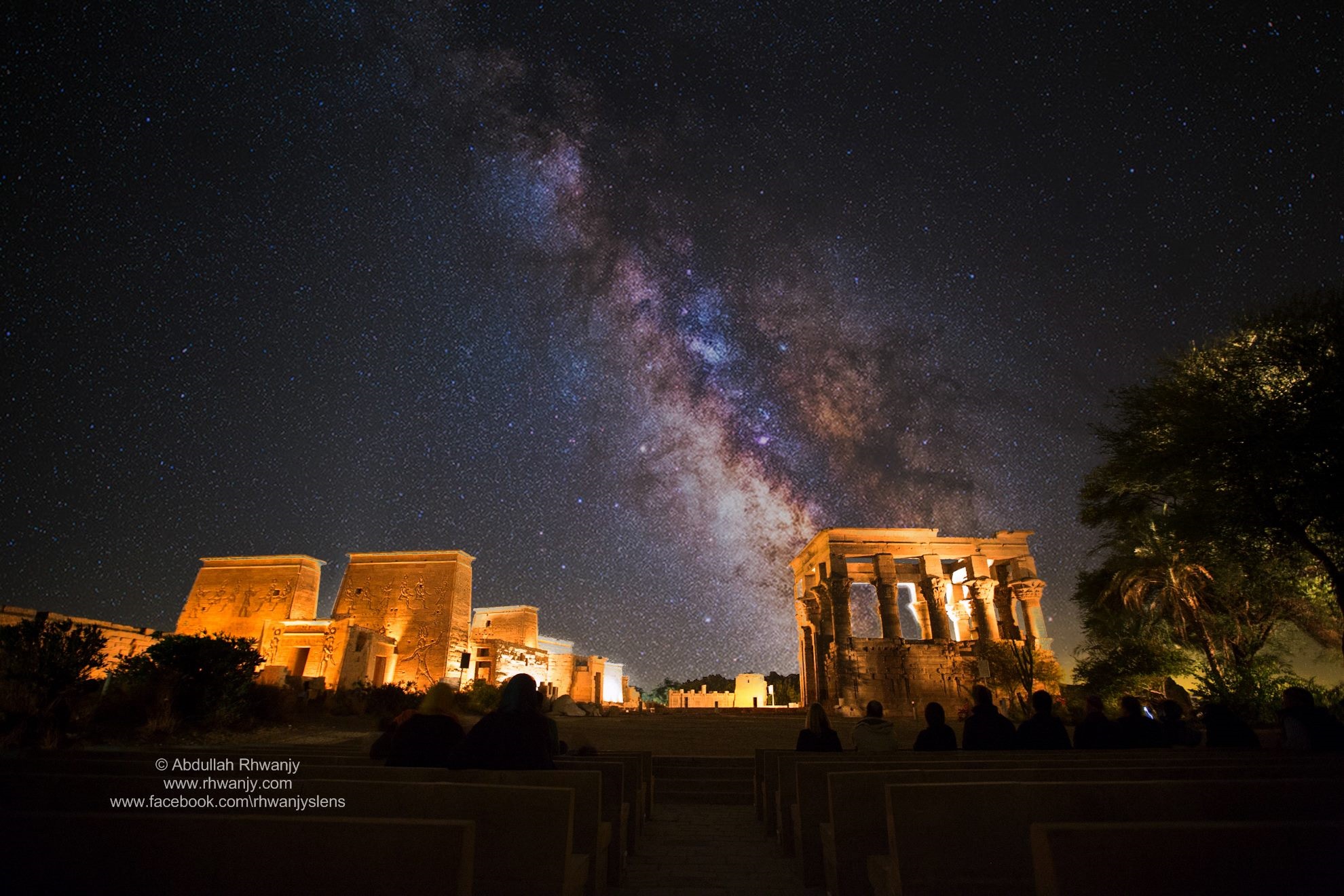The Temple of Philae, the last outpost of Egypt's ancient religion, dazzles under the Milky Way.
The island of Philae and its Temple of Isis have been enchanting visitors since Ptolemaic times, when most of the temple complex was constructed.
One of them, Amelia Edwards, was suitable bewitched by Philae to write, in 1874, 'Seen from the level of a small boat, the island with its palms, its colonnades, its pylons, seems to rise out of the river like a mirage.'
Nectanebo, the founder of Egypt's 30th Dynasty and one of the last native-born kings of Egypt, built a temple on Philae in the first half of the fourth century B.C. in honour of his 'Mother Isis'. This was the prototype for the graceful kiosks of the Ptolemaic and Roman era.
The Ptolemies, who ruled the country for 300 years, adopted the cult of Isis and added their own shrines to the island. The Great Temple of Isis that dominates the island was built by successive Ptolemaic kings constructed during the third century B.C.
Philae's cult status dates back to the New Kingdom, when nearby Biga Island became celebrated as a sacred super-site; the home of three of ancient Egypt's great wonders. This was the burial place of Osiris, god of the Underworld; the first piece of land to emerge from the primordial waters of chaos at the beginning of time; and the source of the Nile itself, believed to emerge from a cavern beneath the island.
The islands of Philae and Biga combined to form a complex in which the tomb of Osiris was honoured by priests on Biga, while neighbouring Philae was dedicated to his magical sister-wife, Isis, who brought Osiris back from the dead just long enough to conceive their son, Horus. It was known as the 'Island from the time of Re'.
Both Osiris and Isis were powerful symbols of resurrection with which the Ptolemies and Romans sought to identify themselves.
So strong was the sway of Isis on Philae that her cult continued there for centuries, resisting even the edict of the Emperor Theodosius, issued in A.D. 391, which imposed Christianity throughout the Roman Empire. It was not until A.D. 550, under Justinian, that Christianity came to the island and the last outpost of Egypt's ancient religion finally closed.
This amazing photo is by landscape and travel photographer, Abdullah Rhwanjy.
To the left of the photo is the first pylon, begun by Ptolemy II around 260 B.C. Around 350 years later, in the early 2nd century A.D., Roman Emperor Trajan built the large kiosk on the right hand side of the photo. It was likely built to shelter the sacred barque (ceremonial boat) of Isis. Like much the temple complex, the kiosk is a wonderful fusion of ancient Egyptian and Greco-Roman architecture.
